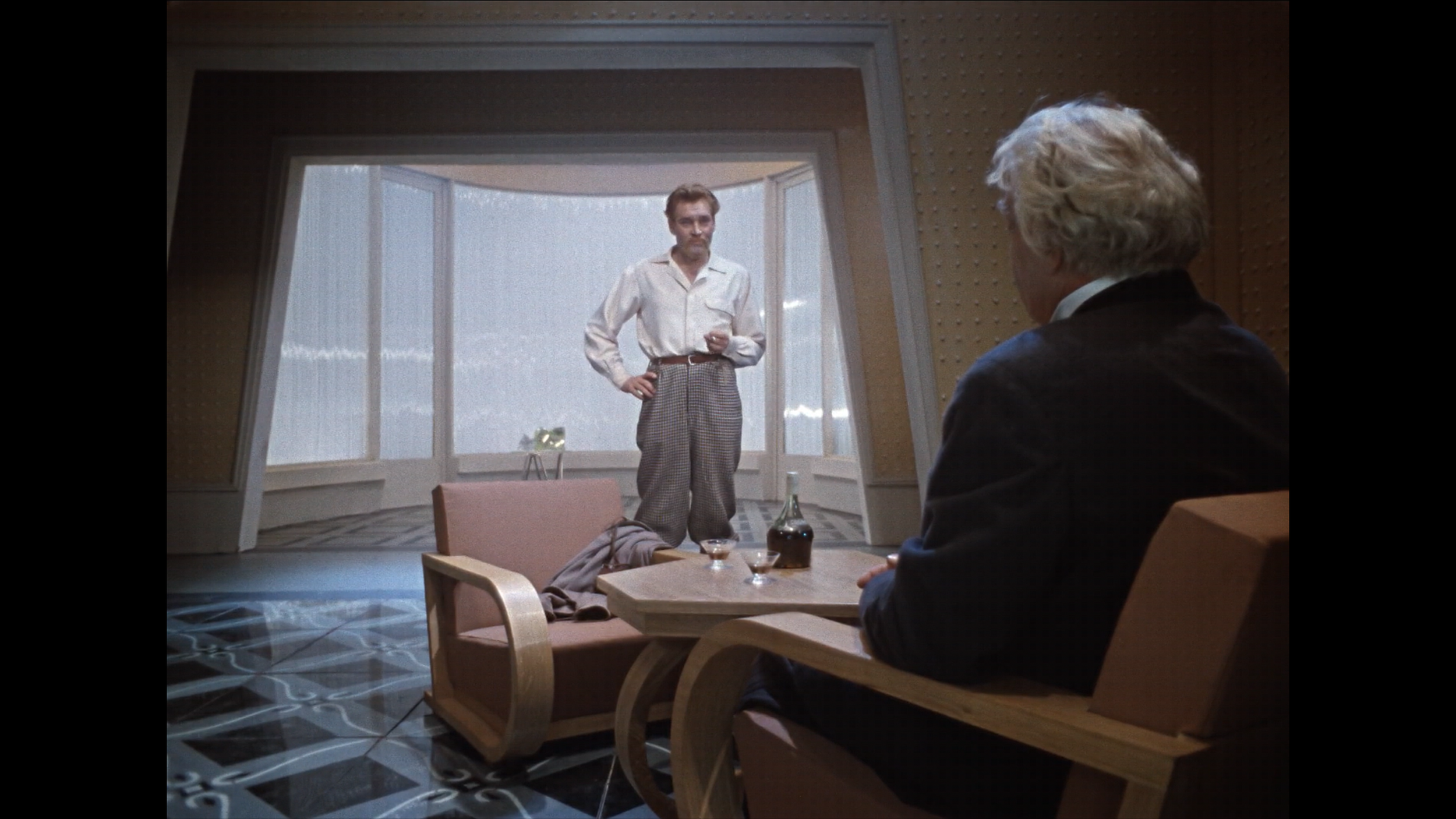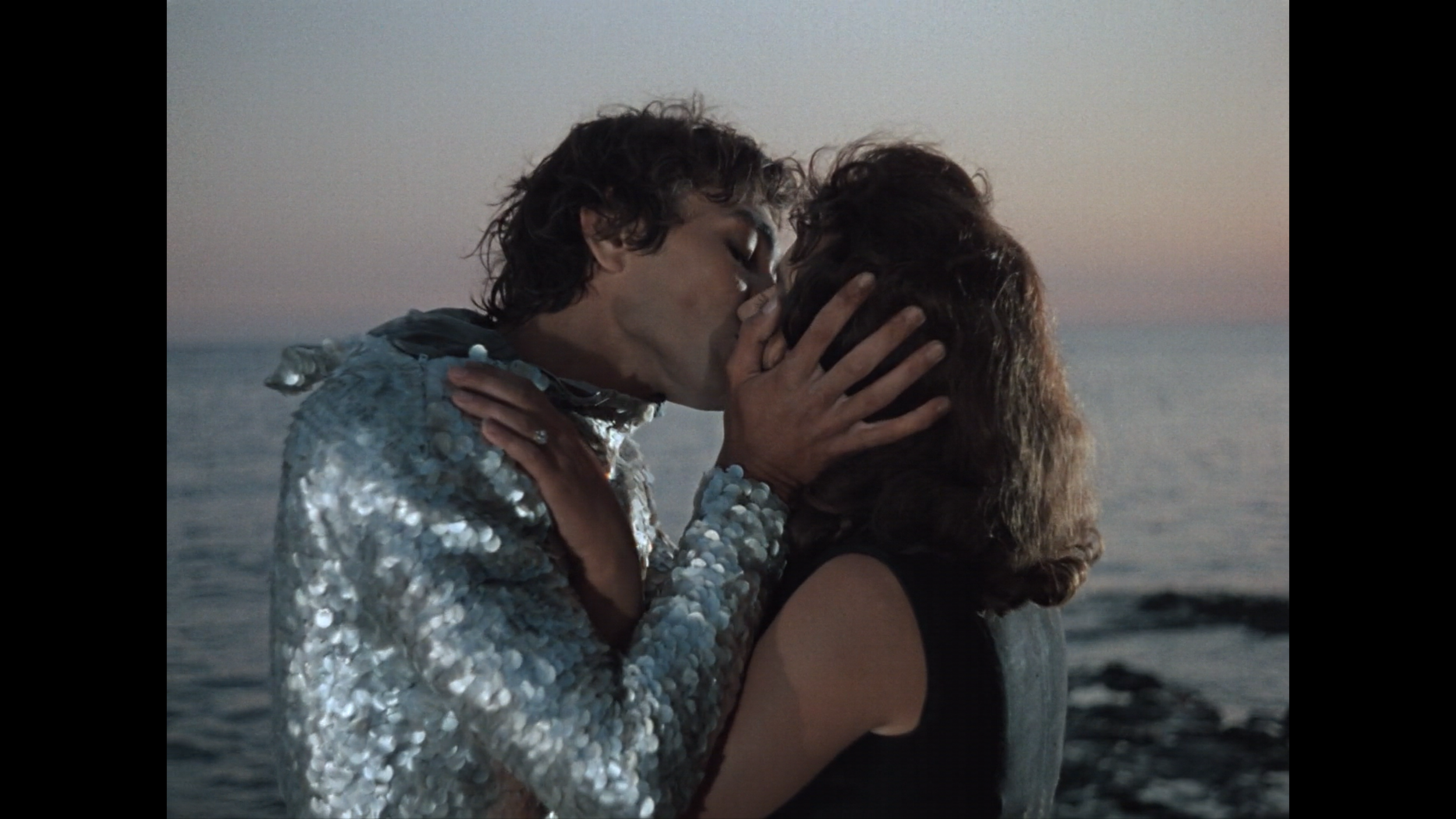Amphibian Man (1961)
There’s an otherworldly beauty to “Amphibian Man” that’s hard to forget. This 1962 Soviet sci-fi romance, directed by Vladimir Chebotaryov and Gennady Kazansky, tells the story of Ichthyander, a young man surgically modified to live underwater, and his ill-fated love for Guttiere, the daughter of a pearl merchant. That sentence might suggest a kitschy spectacle or a simplistic love story, but what makes this film linger in the mind is the way it uses its romance to deliver a potent critique of greed and exploitation.
The visuals are what I love most and the reason I rate it so highly. Shot in the academy aspect ratio with rich colors, every frame feels lush and deliberate. The use of deep focus, deliberate staging and blocking, and layered production design is top level. There’s also gorgeous close-ups the likes I’ve never seen and I still can’t figure out quite how they were lit. I’ve only watched a YouTube copy of this and can only imagine how much better a film print is.
Above water, the coastal town is alive with detail, buzzing with activity, while below, the aquatic world is serene and dreamlike. The underwater photography is astonishing for its time, creating a sense of freedom and beauty…a world far removed from the human chaos on land. Watching these scenes, I was reminded of how effectively great sci-fi can transport us to a place not bound by the constraints of our reality.
And yet, freedom is never absolute in this story. Pedro Zurita, the pearl merchant alongside Guttiere’s overbearing father, embodies a kind of single minded capitalist greed that feels disturbingly timeless. His desire to exploit Ichthyander’s abilities for profit drives much of the film’s tension. There’s something chillingly universal about the way Zurita sees Ichthyander not as a person but as a resource, a means to an end, a tool that can be harnessed and discarded once its value has been extracted.
What struck me is how modern the film’s critique of this exploitation feels. Though made during the Cold War, its themes extend beyond mere propaganda about capitalism. It’s a story about power, control, and how systems built on greed inevitably harm people and nature alike. Watching it today, it’s impossible not to think about the ongoing fights over resources, the exploitation of vulnerable populations, or even the struggles for autonomy in global conflicts like the Ukraine Russia war.
Where “Amphibian Man” diverges from its Soviet cinema contemporaries is in its approach. It doesn’t rely on the cerebral, metaphor-driven Soviet montage style. Instead, it opts for a more fluid narrative, with Hollywood-style editing that prioritizes emotional coherence and accessibility. The love story anchors everything, and while it wears its melodrama proudly, it works because of the sincerity of its performances and the boldness of its imagery.
There’s a kind of aching sadness to Ichthyander’s journey, a sense that the world isn’t ready for someone, or something, so different and full of potential. For all its critiques of economic systems and social structures, the movie is really about the desire to live freely and love without limits. That’s a universal theme, one that transcends its Soviet origins and continues to resonate today.
“Amphibian Man” is an unforgettable blend of romance, fantasy, and pointed critique. It dazzles with its visuals and moves with its story, but it also lingers because of its insights into human nature. This is one of those rare movies that takes us to another world while holding up a mirror to our own. I didn’t expect to be so swept away, but that’s the magic of cinema… it reveals new depths, even in the most unexpected places.








